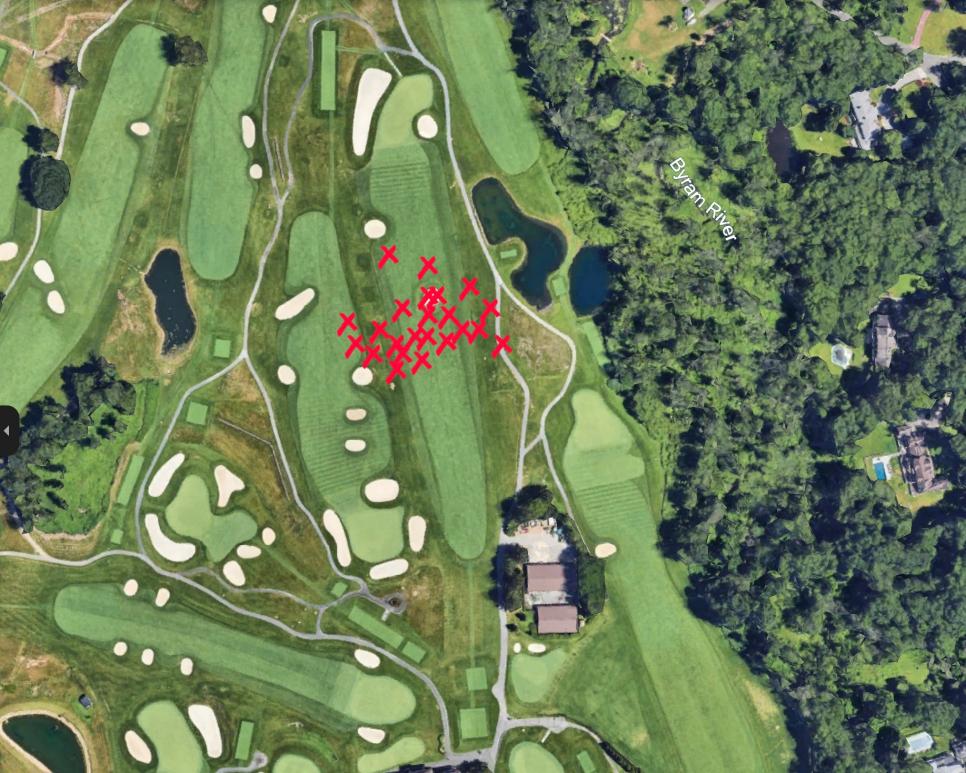I play out of a golf course called Tamarack Country Club in Connecticut. In the middle of Tamarack's first fairway is a devilishly difficult, slightly oversized pot bunker, which has just been made more scary after some off-season updating.
The bunker itself is about 40 feet wide. It's about 300 yards from the back of the back tee, and 250 yards from the front of the next tee. The tee box is perched significantly above the fairway. The hole is pretty scorable if you avoid the bunker off the tee, which is what makes the bunker such a clever addition—it's basically in play for everyone, but it's the one place no golfer wants to be.
.jpeg.rend.hgtvcom.966.544.suffix/1711397244839.jpeg)
Like any good hazard, golfers are so spooked by the bunker itself they generally aim away from it. It works in that they don't go into it too often, but it's an overcorrection that, unless they hit a perfect shot, often leaves them in the left or right rough.
After making that mistake a few too many times myself, last season I was going to try a different route: I was going to aim directly at the bunker. Downwind, into wind, it doesn't matter. Just aim there and see what happens.
I was pretty diligent about keeping track, but not militant about it. This was a science experiment in the loosest sense.
Anyway, of the more than 20 drives I kept track of, here's where they all ended up.

Some takeaways...
1. You don't hit the ball as far as you think
Yes, my very best drives with the right wind got in or over the bunker. But that doesn't mean I could reach that bunker with any level of consistency—and it doesn't mean I should craft an entire strategy around my most perfect, booming drives. I aimed directly at that bunker all summer, and only manged to end up in in twice.
The fact is a better-than-average drive probably wouldn't reach it. That should be what I plan for, and how I'll hit the most amount of shots in the fairway.
It revealed that if nothing else, this was an exercise in ego management.
2. Plan for average, not for perfect
Golfers hit your ball into the general area where you're aiming, not the specific place where they're aiming. Remember that when you're, you're picking a target. If you're sweating about where your most perfect shot will end up, you're probably not playing your misses properly.
You can learn more about this strategy in the video below:
3. It's hard to make a committed swing to an awkward target
It really is! Most of my left drives were the result of exactly that. There's no way around it: Even though it's often smart to aim into the rough, or a bunker, it's hard to make a really assertive swing to a target that is a little awkward. It takes practice, but just because the target may feel strange at times, doesn't mean it actually is.
4. The 70-yard rule
Generally speaking, and as Decade Golf founder Scott Fawcett explained in our recent Golf Digest Happy Hour: Think about your average drive, and 70-yard gap. That's where almost all of your drives will end up, so when you manage your way around golf courses, think about moving that 70-yard wide gap around.
Occasionally you'll encounter obstacles on both sides of that gap. So ask yourself: Is there at least 70-yards between penalty hazards?
If so, hit driver. If not, drop down a club. It can get a little more nuanced than that, but generally speaking, it's a good starting point for golfers to abide by.